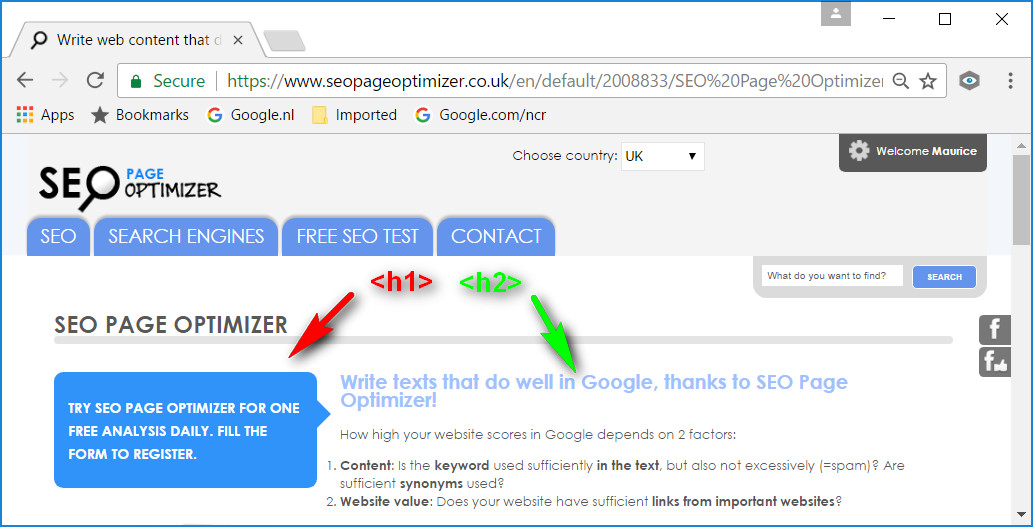More information about tag headers
Headers can be summarised as headings and sub-headings above paragraphs. Header texts are located between header tags (<h1>…</h1>, <h2>…</h2>, …, <h6>…</h6>) and form a hierarchy: the heading between the <h1>-tags is the most important. It is best if there is just one <h1>-header per web page. Sub-headings for the underlying paragraphs are in <h2>- to <h6>-tags, in descending level of importance.
It is a good idea not to interrupt the hierarchy: certain search engines value it less if, for example, you jump from an <h2>-tag to an <h4>-tag and skip the <h3>-header. It is not necessary to use all headers up to <h6>: the higher the header number, the less important the search engine considers the information contained within to be.
 |
The most important keywords for a specific web page must be reflected in the headers. Including the keywords too often is not ideal as search engines regard this as spam behaviour and give the web page a lower score for search results. It is better to use a good mix of the most important keywords and words that are related to them. |
The clever use of headers makes it clear to the search engines that the content of the web page has a good structure. And this good structure is translated into relevance and a high score.
Headers are also interesting for human visitors, certainly if they form the sub-headings of the various paragraphs. No matter how interesting or relevant the content of your web page is, most people do not read it thoroughly but scanit: they read the title, the first paragraph - so include the most important message and make it an <h1>-header, the sub-headings - make underlying headers from these -, quickly review the images, scroll a little and maybe pick up the last sentence. Make sure that the sub-heading that is above a paragraph contains the most important information from that paragraph so that visitors have at least an idea of the content. By using the most important keywords, you are also making it immediately clear that the content is, indeed, relevant.
If a sub-heading is inviting, draws attention and takes the form of a call-to-action, the visitor may well go so far as to actually read the paragraph underneath.